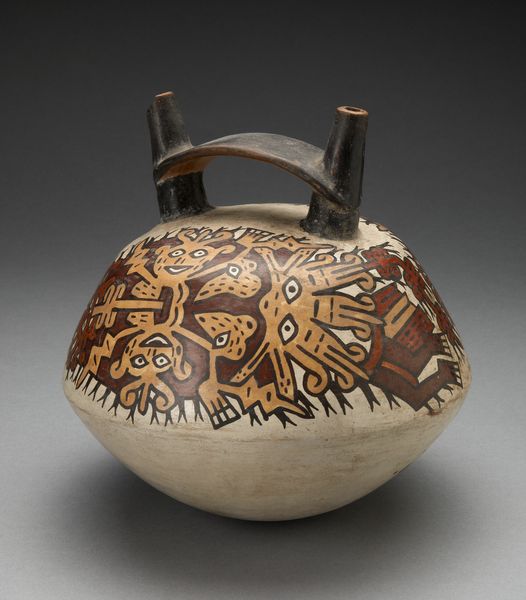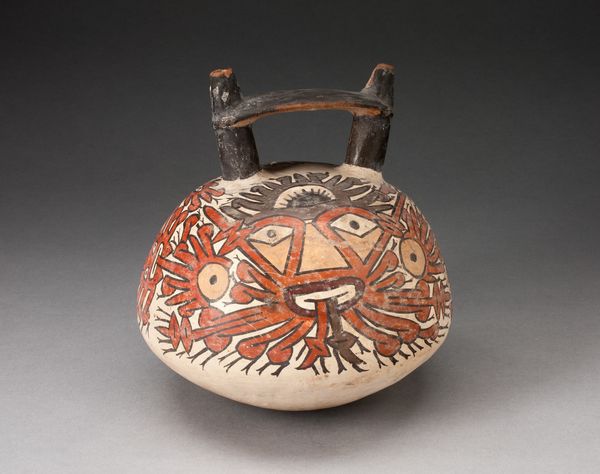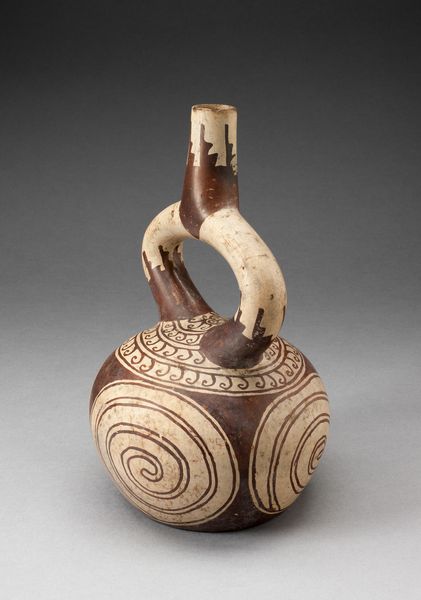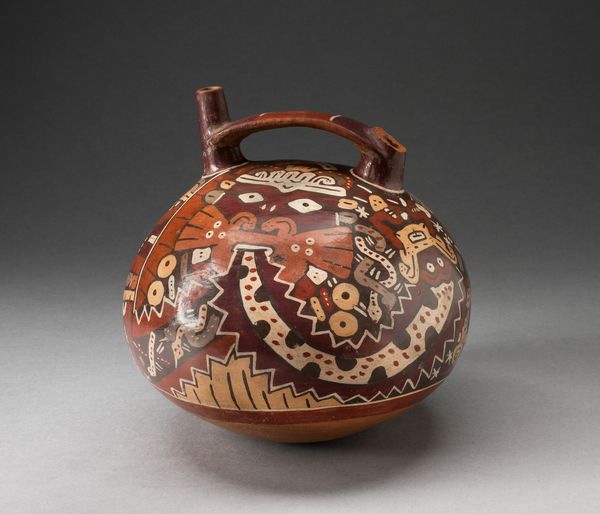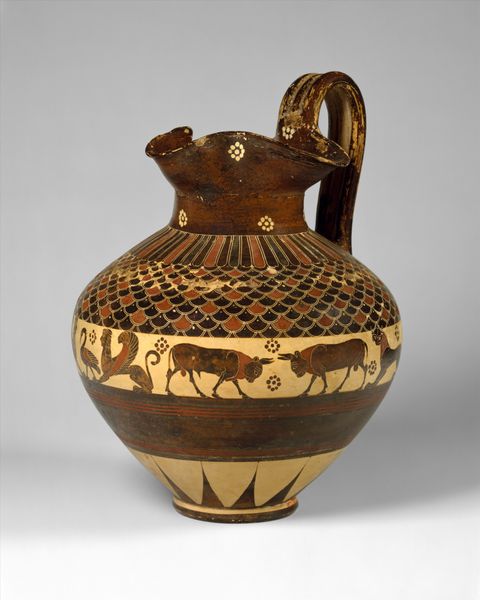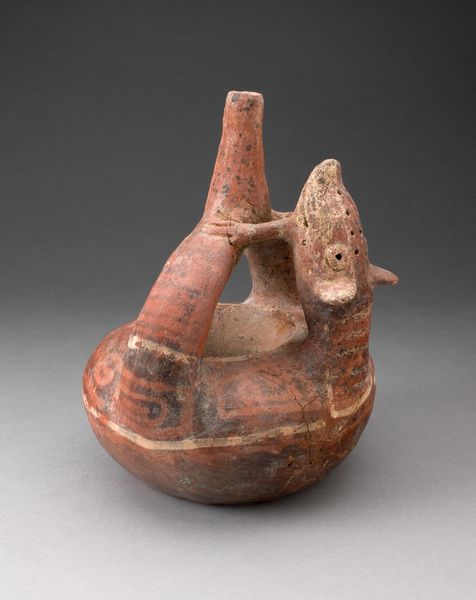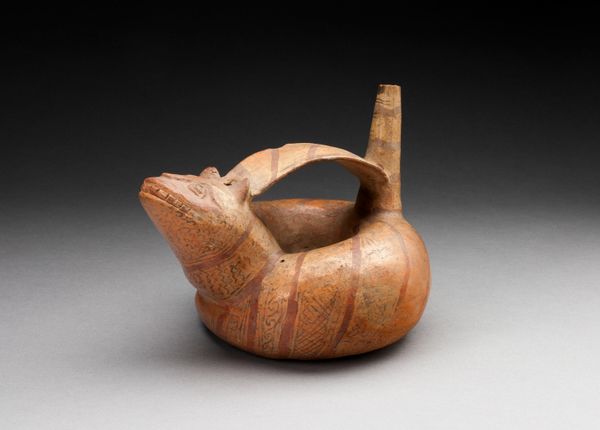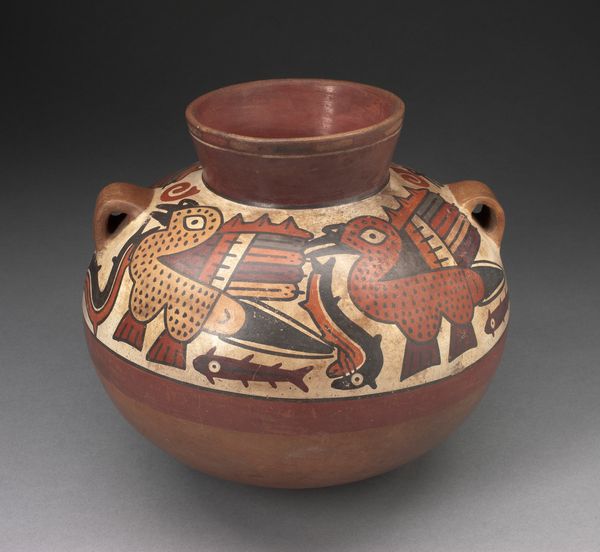
Vessel with Abstract Motifs and a Modeled Head Possibly 700 - 900
0:00
0:00
ceramic, sculpture, terracotta
#
ceramic
#
geometric
#
sculpture
#
terracotta
#
indigenous-americas
Dimensions: 17.6 × 15.2 cm (6 15/16 × 6 in.)
Copyright: Public Domain
Curator: Looking at this vessel from the Tiwanaku culture, dated roughly 700 to 900, what strikes you immediately? Editor: It’s fascinating how such an everyday object feels so heavily symbolic. The patterns—geometric and stylized—give me the feeling I’m looking at something far more important than mere utility. Curator: You’ve picked up on something central to Tiwanaku art. This ceramic vessel, found within the borders of modern Bolivia, fuses the practical and the ceremonial. Objects like these were powerful visual statements reflecting social structures. Editor: I see that now. And it's the head at the apex that makes me really consider its purpose; the placement seems very deliberate, elevating its status. Could it be an ancestor figure, perhaps? Curator: Quite possibly. It's intriguing to consider how imagery, like this modeled head, was likely understood differently across various levels of Tiwanaku society. While leaders might connect them to lineage, common people perhaps associated it with more widespread, understood mythologies. Editor: The fact that those mythologies were widespread speaks volumes to Tiwanaku power and social control, right? The repeated images reinforcing a common worldview. Curator: Precisely. Vessels like these played a part in large-scale feasting rituals—arenas to affirm political relationships with elites and cement alliances within the state, but they would only succeed by using widespread known imagery. The abstract nature invites a multitude of interpretations, ensuring engagement. Editor: The birds in particular—we’ve seen avian symbolism across so many cultures—connecting humanity to the sky, spirits. Curator: Certainly. Consider, too, how this piece exists within museum collections now, another kind of stage, of course. Here, its symbolism enters new conversations. What do these shapes evoke in today's context? What stories do they spark in a new audience? Editor: It makes you realize how potent visual languages are. How ancient symbols transform, yet echo, in contemporary experience. This vessel feels utterly alive still. Curator: I find that remarkable, too. An object meant to cement a past society continually reinventing itself in dialogue with the present.
Comments
No comments
Be the first to comment and join the conversation on the ultimate creative platform.

